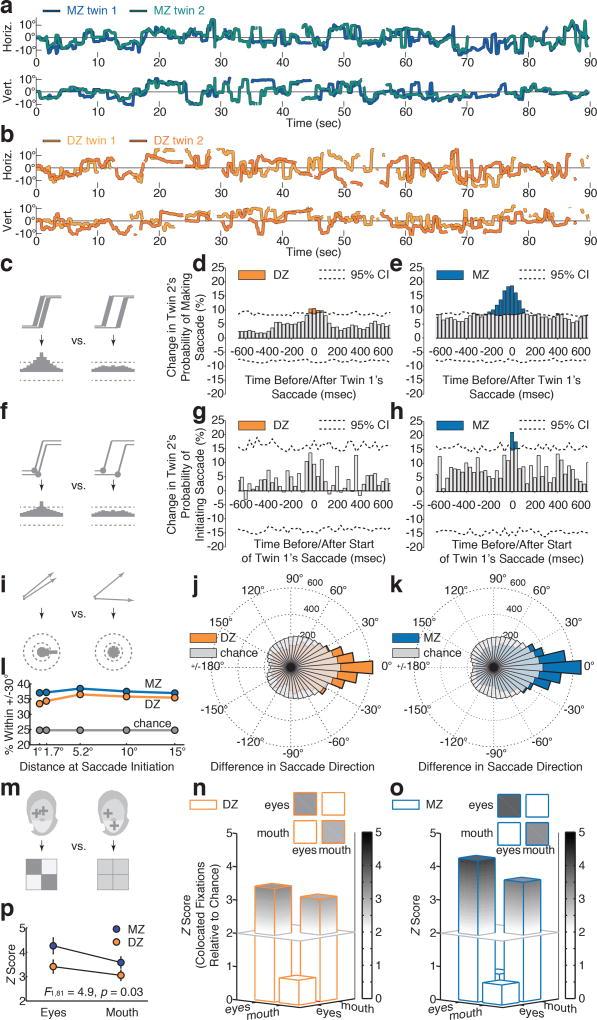Figure 2. When viewing scenes of social interaction, monozygotic (MZ) twins exhibit greater probability of shifting their eyes at the same moments; greater probability of shifting their eyes in the same subsequent directions; and greater probability of fixating the same semantic content at the same moments.
a-b, Example eye position data for MZ and DZ twins. Gaps in plots reflect blinks or off-screen fixations. c, Schematic peristimulus time histograms (PSTHs) showing probability of co-occurring saccades. At left, if saccades co-occur, twin 2’s saccade probability increases with twin 1’s saccades; at right, if saccades do not co-occur, probability remains unchanged. Dotted lines in (d-e) and (g-h) show 95% confidence intervals for change expected by chance (i.e., no time-locking), measured by permutation testing. d-e, Small DZ vs. large MZ increase in probability of time-locked saccades. f, Schematic PSTHs showing probability of time-locked saccade initiation (as opposed to c-e, measuring co-occurrence of entire saccades). g-h, No significant DZ change, but significant MZ time-locking of saccade initiation. i, Schematics showing probability of saccades shifting in the same or different direction (angular difference, twin1-twin2). j-k, Polar histograms measuring the distribution of differences in saccade directions for DZ and MZ twins, in relation to upper bound (95% CI) of results expected by chance, measured by permutation testing. l, Across all comparisons, MZ twins shift saccades in more similar subsequent directions than DZ twins. m, Schematics showing probability of fixating on the same semantic content at the same moments. Left: collocated, co-occurring eye and mouth fixations; right: non-collocated, non-co-occurring. n-o, Collocated, co-occurring fixations for DZ and MZ twins, plotted as Z scores relative to results expected by chance, measured by permutation testing. p, Collocated, co-occurring fixations (diagonals from (n) and (o)); error estimates (s.e.m.) from individual variation.

